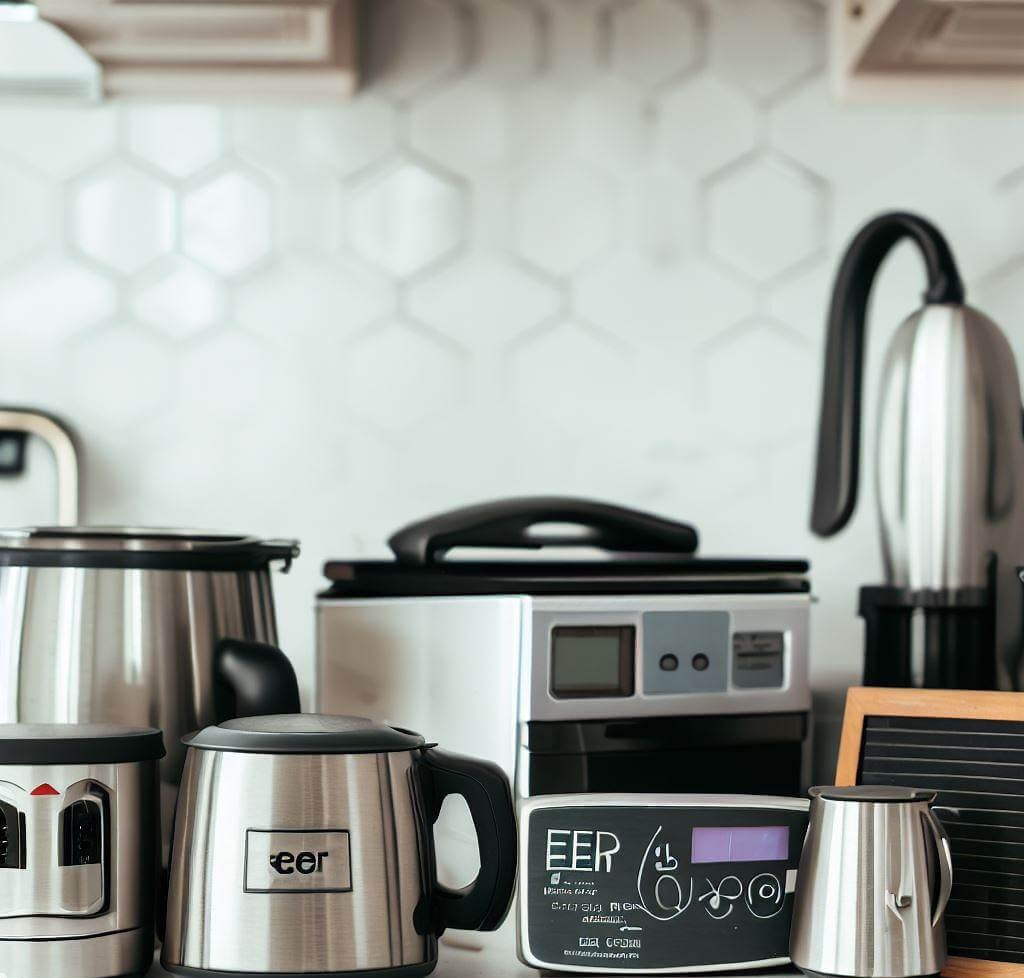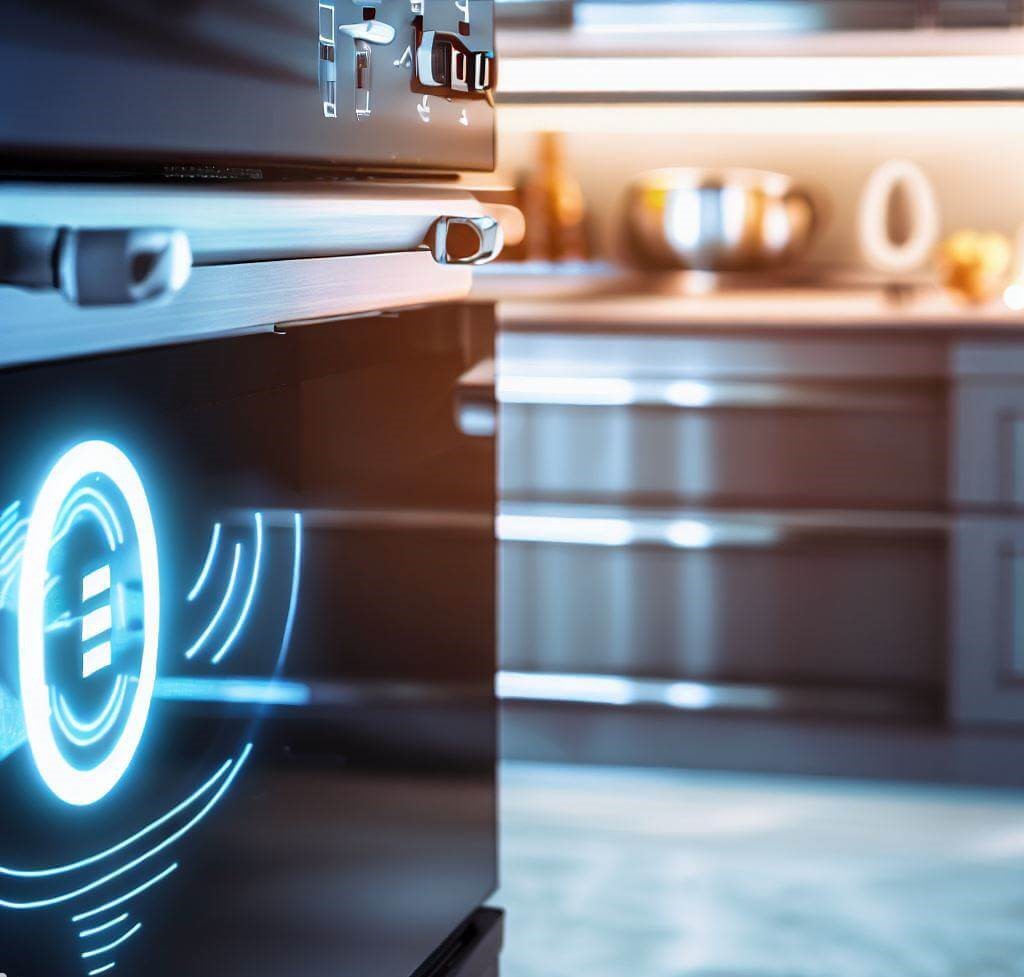EMF: A Quick Overview
To truly grasp the unseen forces at play in your kitchen, it’s key to understand electromagnetic fields, or EMF. These are invisible areas of energy, often referred to as radiation, that are associated with the use of electrical power and various forms of natural and man-made lighting. EMFs are created by differences in voltage and magnetic fields are created when the electric current flows. According to World Health Organization, electric fields are created by differences in voltage and magnetic fields are created when the electric current flows.
EMF can be categorized into two types: low-level radiation or non-ionizing radiation, and high-level radiation or ionizing radiation. The former is mild and considered harmless to people. It includes things like radio waves, microwaves, infrared radiation, and visible light. High-level radiation, in contrast, is the type of EMF which has enough energy to break apart molecular bonds and is more likely to damage body tissue. This category includes ultraviolet light, X-rays, and gamma rays. Given that our focus is in the kitchen, we will be focusing on non-ionizing radiation.
EMF in the Kitchen: More Than Just Microwaves
While microwaves often come to mind when we talk about EMF in the kitchen, they aren’t the only sources. Your kitchen is, in fact, a hotbed of EMF activity due to the various appliances we use every day for food storage and preparation. From your refrigerator and blender to your induction cooktop, all electrical appliances generate some level of EMF. These electromagnetic fields vary in strength, depending on the appliance, how it’s used, and how close you are to it. Let’s take a closer look at a couple of common kitchen items contributing to EMF in your home.
How the Fridge Contributes to EMF
Refrigerators, due to their constant operation, are significant contributors to EMF in your home, particularly in the kitchen. These appliances operate by using a motor to pump coolant through the system, which cools down the temperature inside the fridge. This process generates an electromagnetic field. And since refrigerators are constantly running, so is their EMF emission.
Additionally, the fridge is a kitchen appliance that usually sits in close proximity to areas of activity – whether that’s the cooking area, dining area, or even the living room in open-plan houses. This means that, while the EMF from a fridge may not be extraordinarily high, it can contribute significantly to your overall exposure due to its location and constant operation.
EMF from Induction Cooktops
Induction cooktops have gained popularity due to their energy efficiency and the control they offer over the cooking process. However, they also produce significant levels of EMF. Unlike traditional gas or electric stoves, induction cooktops use a magnetic field to generate heat directly within the cookware. While this method of heating can cook food more evenly and allows for precise temperature control, it also produces higher than average EMF levels.
When an induction cooktop is turned on, an electric current runs through a coil within the cooktop, creating a magnetic field. This magnetic field then induces an electric current within the pot, creating heat. While this process is great for cooking, it means that when the induction cooktop is on, it’s producing a continuous source of EMF. It’s important to note that the strength of the EMF diminishes with distance, so standing a few feet away while cooking can help minimize exposure.

EMFs and Food Quality
Research to date doesn’t provide a definitive answer. On one hand, some studies suggest that cooking with EMFs, especially microwave cooking, may lead to a slight decrease in certain nutrients like vitamin C. However, this is not unique to microwaves or induction cooktops. Traditional cooking methods like boiling and baking can also reduce nutrient levels in food, often to a greater extent.
On the other hand, some research has shown that microwave cooking can better preserve nutrient levels in certain foods compared to conventional cooking, as it often involves shorter cooking times and minimal water.
While this is an area that needs more extensive research, it’s crucial to remember that the way we cook our food – irrespective of the method – can affect its nutritional value. Moderation and variety in cooking methods, as in all things, seem to be a sensible approach.
Cooking with EMFs: An Inevitable Part of Modern Life
Given the ubiquitous nature of EMFs in our lives and kitchens, it is impossible to avoid them completely. The key lies in understanding the sources of EMFs, the potential effects on our health and food, and taking informed steps towards mitigating unnecessary exposure. It’s about creating a balance that allows us to enjoy the conveniences of modern life while minimizing potential risks.
EMFs play an essential role in the functioning of our modern kitchens. While there are potential health considerations to bear in mind, understanding and managing our EMF exposure can help us navigate this aspect of contemporary life confidently. As research continues to explore the complex relationships between EMFs, food, and health, it is our role to stay informed, make mindful choices, and enjoy the culinary process in its entirety.
The Effects of EMF on Cooking and Food
There is a long-held debate over the effects of EMF on cooking and food. Certain methods of cooking, such as microwave and induction cooking, directly use the principle of electromagnetism. Microwaves, for instance, work by emitting electromagnetic waves (at a specific frequency) that excite water, fat, and other molecules in food, generating heat and subsequently cooking the food.
While there’s no definitive evidence that cooking with such methods adversely affects the nutritional quality of food, it is known that any type of cooking can lead to nutrient loss. However, the amount lost often depends on the cooking time, the method used, and the specific nutrient.
Does EMF Change the Nutritional Value?
As for whether EMF changes the nutritional value of food, the consensus in the scientific community is that it does not significantly differ from traditional methods of cooking. According to the Harvard Medical School, cooking food in a microwave might actually preserve more of its vitamins and minerals because microwaves can cook food more evenly, thus reducing cooking time.
As stated earlier, any form of cooking can lead to some nutrient loss. For example, water-soluble vitamins such as vitamin C and B vitamins can leach out of food during the cooking process. This happens regardless of whether you are cooking on a traditional stove, an induction cooktop, or in a microwave.
EMF and Food Safety: Any Concerns?
When it comes to food safety, EMF doesn’t pose any additional concerns beyond those associated with traditional cooking methods. It’s essential to remember that the type of EMF used in kitchen appliances falls into the category of non-ionizing radiation, which doesn’t have enough energy to ionize atoms or molecules or change the chemical composition of food.
However, there are still some guidelines to adhere to for safe food handling and cooking, particularly with microwaves. For instance, uneven cooking (a potential issue with microwaves if the food isn’t periodically stirred or turned) could result in “cold spots” where harmful bacteria can survive. Using microwave-safe cookware and following the manufacturer’s instructions for stirring, covering, and standing times can help promote safe and even cooking.
To sum it up, while kitchen appliances do produce EMF, their impact on food safety and nutrition appears to be minimal, no more significant than that of conventional cooking methods. As always, proper food handling and cooking practices are the most critical factor for both food safety and nutrition.
EMF Protection Strategies in the Kitchen
While there’s no definitive proof that the low-level EMF exposure from kitchen appliances is harmful, it’s understandable if you’d rather play it safe. Below are some strategies you can employ to limit EMF exposure in your kitchen:
- Distance: One of the simplest methods to reduce EMF exposure is by keeping a safe distance from operating appliances. The intensity of an EMF decreases significantly the further you move away from the source.
- Limit Usage: Minimize the use of high EMF devices. For example, consider using a toaster oven or conventional oven instead of a microwave for small heating tasks.
- Off When Not in Use: EMF is emitted from appliances even when they are turned off but still plugged in. Unplug your appliances when they are not in use.
Choosing Low EMF Appliances
In addition to these strategies, consider choosing low-EMF appliances. While most modern appliances have been designed with consumer safety in mind, there can be some variation in the amount of EMF they emit.
Consider appliances with lower power outputs. For example, you could opt for a lower wattage microwave. Similarly, newer models of appliances often have better EMF shielding, so it might be worth considering an upgrade if your appliance is outdated.
When purchasing new appliances, try to research and compare the EMF levels of different models. Various companies specialize in low-EMF appliances, which can be a good starting point.

Practical Tips for Lowering EMF Exposure
Apart from specific kitchen strategies, here are some general tips to help you lower your EMF exposure at home:
- Wired Over Wireless: Where possible, choose wired devices over wireless ones. Wired connections usually emit less EMF than wireless devices.
- Use EMF Shields: EMF shields are available for a variety of appliances and devices. They work by blocking a portion of the EMF radiation from reaching you.
- EMF Meter: Consider purchasing an EMF meter. This device measures the level of EMF radiation in your home. By knowing where the hotspots are, you can rearrange your living space to reduce exposure.
Remember, while it’s wise to take precautionary measures, the EMF produced by household appliances is generally low-level, and as per current scientific understanding, it’s unlikely to cause harm. However, more research is always beneficial in this evolving field, and it’s best to stay updated on the latest findings.
Embrace a Healthy Culinary Journey
In the pursuit of a healthier lifestyle, we often focus on what we eat, but seldom do we pay attention to the unseen aspects such as EMFs, which may be all around us, even in the kitchen. Incorporating EMF awareness and protection into your culinary routine can be another step in your journey towards overall health and well-being.
Knowledge is your most potent tool. Understanding the sources of EMFs in your kitchen and learning how to mitigate them can make you feel more confident and in control of your environment. It’s not just about healthy ingredients anymore. It’s also about the process – a holistic approach that includes being mindful of potential EMF exposure and striving to minimize it.
Conclusion
In a world that is increasingly reliant on technology, EMF exposure has become a part of our everyday lives. In our kitchens, various appliances generate EMFs, contributing to our overall exposure. While studies are ongoing to ascertain the long-term effects of low-level EMF exposure, adopting a cautious approach can help minimize potential risks. By choosing low EMF appliances, using protective measures, and following practical tips, we can mitigate EMF exposure and make our culinary journey a healthier one.
FAQs
- What are some of the primary sources of EMF in the kitchen? Microwaves, refrigerators, induction cooktops, and electric ovens are some of the most common sources of EMFs in a kitchen.
- Can EMFs from kitchen appliances cause harm? Current scientific understanding suggests that the low-level EMFs produced by kitchen appliances are unlikely to cause harm. However, research is ongoing, and it’s always best to stay updated on the latest findings.
- How can I reduce my EMF exposure in the kitchen? There are several ways to do this, such as maintaining a safe distance from operating appliances, limiting the usage of high EMF devices, unplugging appliances when not in use, and choosing low-EMF appliances.
- Do low-EMF appliances exist? Yes, various companies specialize in low-EMF appliances, which are designed to emit lesser EMF than standard appliances.
- Is EMF exposure only a concern in the kitchen? No, EMF exposure can occur anywhere there are electrical devices or wiring, including other parts of your home, your workplace, and even outdoor public spaces. It’s essential to be aware of potential EMF sources around you and take steps to minimize exposure.

